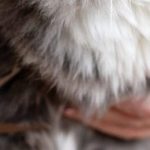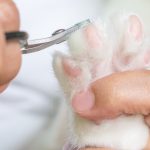Table of Contents
Shaving a cat can be a delicate task that requires patience and the right approach. Before you start, it’s crucial to brush your cat thoroughly to remove any loose fur and prevent tangles. This step is essential in creating a smooth shaving experience for both you and your feline friend. Additionally, donning a pair of rubber gloves can help maintain a firm grip on your cat and protect your hands during the process.
When the time comes to shave a cat, ensure a calm environment to keep stress levels low. A relaxed cat is easier to handle, making the shaving process safer and more efficient. Remember to use gentle strokes and reassure your cat throughout the shaving session to maintain a sense of trust and comfort.
Is Shaving Right for Your Cat?
Deciding to shave a cat is not a decision to be taken lightly. It’s important to consider whether your furry companion is facing grooming challenges that cannot be managed by regular brushing alone. Cats, especially senior cats, might struggle with self-grooming due to age-related stiffness or other health issues, making shaving a viable option for maintaining their coat.
Shaving a cat can help alleviate discomfort caused by matted fur, which can pull on the skin and lead to pain. However, it’s essential to weigh the pros and cons, as the absence of the protective layer of fur can also expose your cat to temperature fluctuations and other environmental factors.
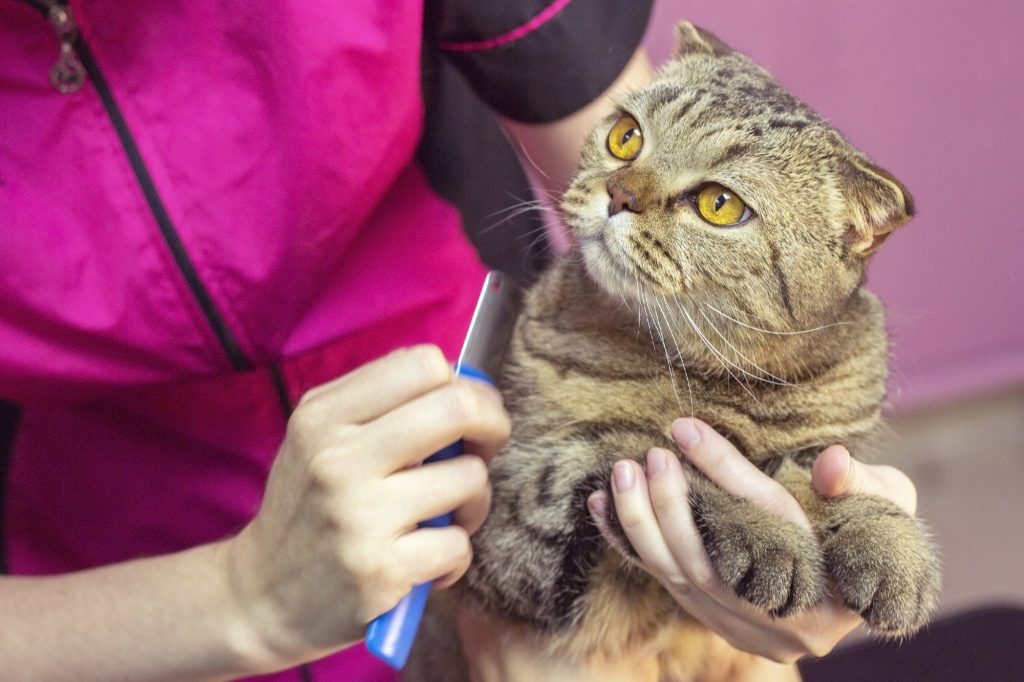
Signs That It’s Time to Shave Your Cat
It might be time to shave a cat if you’ve noticed difficulty keeping their coat free of knots despite regular attempts to brush your cat. This is especially true if your cat recoils from the brush, indicating that grooming has become an unpleasant experience.
• Excessive Matting and Tangling
Matting can cause significant discomfort for cats, as their skin gets pulled by the tangled fur. In severe cases, it can even restrict movement and hide skin conditions. If regular brushing fails to resolve the issue, shaving the matted fur may be the best course of action to restore comfort and hygiene.
• Poor Grooming Ability
Some cats, particularly as they age, lose the ability or desire to groom themselves effectively. This can result in a neglected coat that’s prone to matting and dirt accumulation. Shaving can help minimize the grooming they need to perform on themselves and maintain their cleanliness.
• Skin Irritation or Infection
If a cat is suffering from skin irritation or infection, shaving the affected area can provide easier access for treatment and allow the skin to breathe and heal. Always consult a veterinarian before shaving a cat’s body to address skin issues, as improper shaving can exacerbate the condition.
• Mobility Issues
Cats with mobility issues may struggle to reach all areas of their body for grooming. Shaving can reduce the burden of self-maintenance, keeping their coat manageable and preventing matting in hard-to-reach areas.
• Grooming Refusal
Some cats adamantly refuse to be groomed, whether due to past trauma or simple dislike of the process. In such instances, shaving might be necessary to maintain their coat and prevent mats that could contribute to health problems.
Pre-Shave Preparations
Before shaving your cat, it is important to make the necessary preparations. This includes setting up a safe and quiet space and gathering all the tools you’ll need for the grooming process.
Setting up a Safe Shaving Space
Creating a secure area for shaving your cat is crucial. Choose a well-lit, non-slippery surface and ensure that all your tools are within reach. Before you begin, brush your cat to remove any matted fur and help prevent severe matting during the shave. Be prepared for some excessive shedding as part of the process, and remember that a calm environment will make the grooming process easier for both you and your cat.
Choosing the Right Tools and Equipment
For a successful shave, selecting appropriate clippers is critical. These should be designed specifically for shaving a cat, taking into account the delicate nature of their skin and fur.
Clippers – Selecting the Best Model
When choosing clippers for shaving a cat, opt for a quiet model with multiple speed options to suit the sensitivity of your cat’s skin. It’s essential to pick a tool that won’t overheat, as this can cause discomfort or even burn your cat’s skin during the shaving process.
Blades and Accessories – Ensuring Comfort and Safety
Use sharp, clean blades to provide a smooth shave and minimize the risk of pulling on your cat’s fur, which can lead to skin irritation. Accessories like blade guards can help control the length of the shave, protecting your cat’s skin from nicks and cuts, especially around sensitive areas.
Shaving Your Cat Step-By-Step
Shaving your cat involves a step-by-step approach that carefully considers your cat’s comfort and safety. From dealing with matted fur to keeping the skin taut, each stage of the grooming process must be handled with care.
1. Starting With a Calm and Clean Cat
Ensure your cat is calm and clean before you start shaving your cat. Gently brush out any matted fur, and if you encounter resistance, be patient and try to soothe your cat. When shaving, keep the skin taut to avoid cuts. It’s important to protect your cat’s skin from potential harm, such as from skin cancer, by not shaving too close, as their fur provides essential protection against UV rays and other environmental hazards.
2. Brushing to Remove Tangles and Mats
Before shaving your cat, it’s crucial to brush or comb through the cat’s coat to remove any tangles and mats. This step is essential, especially for long-haired cats, whose fur can become easily entangled. Use a brush or comb suitable for your cat’s thin and delicate fur, and take frequent breaks if your cat becomes agitated. Gentle brushing or combing not only eases the shaving process but also prevents pulling the skin during the shave.
3. Gradually Introducing the Clippers
When it’s time for shaving your cat, start by gradually introducing the clippers. Let your cat familiarize itself with the sound and vibration in a non-threatening manner. Hold the clippers near your cat without touching it, then gently touch the cat with the clippers turned off before moving on to trimming. This stepwise approach can help minimize stress and make the overall experience more pleasant for your furry friend.
4. Strategically Shaving in Sections
Shave your cat in sections, working systematically to create an even look. Keeping the skin taut can help avoid nicks and ensure a smoother shave. Take care to work gently and patiently through each section.
Avoiding Sensitive Areas – Tips and Techniques
When shaving a cat, it’s imperative to be careful around sensitive areas. Keep the skin taut to avoid cuts, especially around the belly, legs, and face. Use a shorter blade guard to navigate these delicate spots and always move the clippers in the direction of the hair growth. If you’re uncertain, it may be best to leave these tricky areas to a professional groomer.
The Lion Cut – A Popular Shaving Style
The Lion Cut is a popular shaving style for cats, especially during warmer months. This style leaves the fur on the head, neck, and the tip of the tail, while the rest of the body is shaved close to the skin. While shaving a cat in this fashion can reduce grooming needs, it’s important to ensure your cat is comfortable with this extensive grooming change.
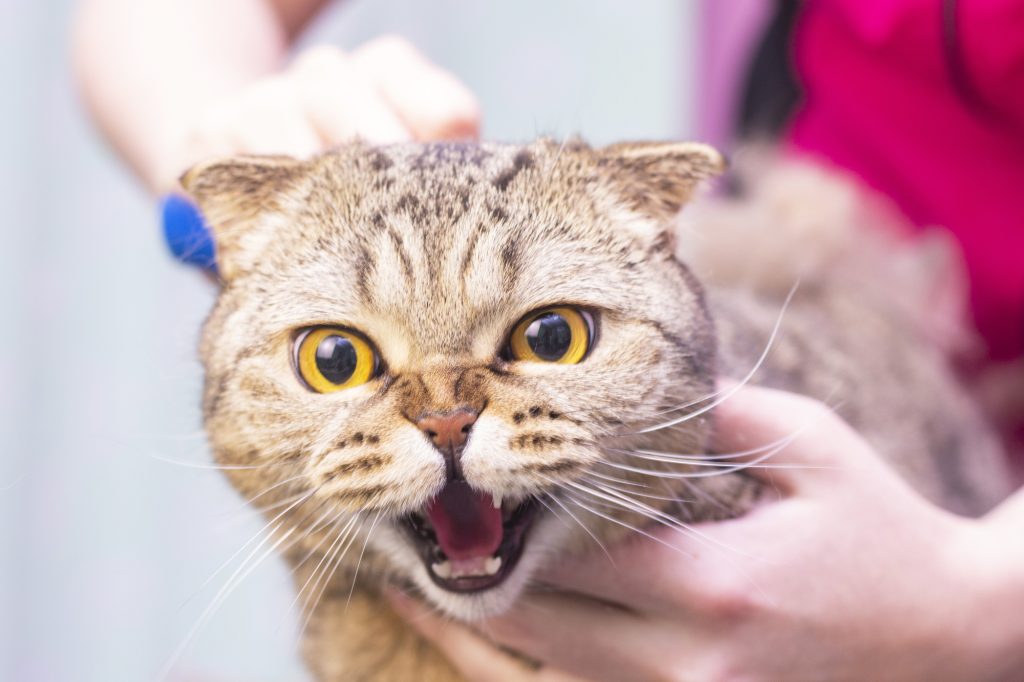
Aftercare and Maintenance
After shaving, it’s important to maintain your cat’s comfort with proper aftercare, ensuring their skin stays healthy as the fur grows back.
Post-Shave Skin Care for Your Cat
Once your cat’s fur has been shaved, their skin is very sensitive and exposed to potential irritants. To help soothe the skin, use a soft bristle brush to gently stimulate the skin and remove any loose hairs. Keep an eye out for any signs of redness or irritation, which may require veterinary attention. As the fur grows back, continue to brush regularly to prevent new mats from forming.
Monitoring Your Cat’s Behavior Post-Shave
After shaving, observe your cat’s behavior closely. Some cats may act differently after being shaved, either enjoying the newfound freedom from heavy fur or feeling exposed and vulnerable. Provide extra comfort and a warm environment if your cat seems to be seeking cozy spots to rest. If you notice any adverse reactions, such as excessive licking or skin changes, consult your veterinarian.
Health and Safety First
Remember, your cat’s health and safety come before aesthetics. Never force a grooming session if your cat is stressed or unwell.
Identifying When Not to Shave Your Cat
There are times when shaving your cat is not recommended. Cats with certain medical conditions or skin problems should not be shaved without a veterinarian’s advice. If your cat is prone to stress or has a history of reacting negatively to grooming, shaving might cause more harm than good. Additionally, senior cats or those with compromised immune systems may have difficulty tolerating the stress of being shaved.
Always consider your cat’s overall health and consult with a vet if you’re unsure. Skin conditions, allergies, or other underlying health issues might be exacerbated by shaving. In these cases, alternative grooming methods should be considered to keep your cat’s coat healthy without causing additional stress or discomfort.
Alternative Solutions to Shaving
If shaving isn’t the right option for your cat, consider alternative grooming solutions. Regular brushing, using the right brush or comb for your cat’s coat, can help prevent mats and tangles. For cats that don’t tolerate brushing well, there are dematting sprays and tools that can gently remove mats without the need for shaving. Additionally, specialized grooming gloves can reduce shedding and keep your cat’s coat shiny and healthy.
Diet also plays a significant role in the health of your cat’s coat. High-quality cat food that supports skin and coat health can reduce the need for shaving. Supplements like omega fatty acids may also improve coat condition. Finally, regular check-ups with your vet can help identify and treat any skin problems early, before they require drastic grooming measures.
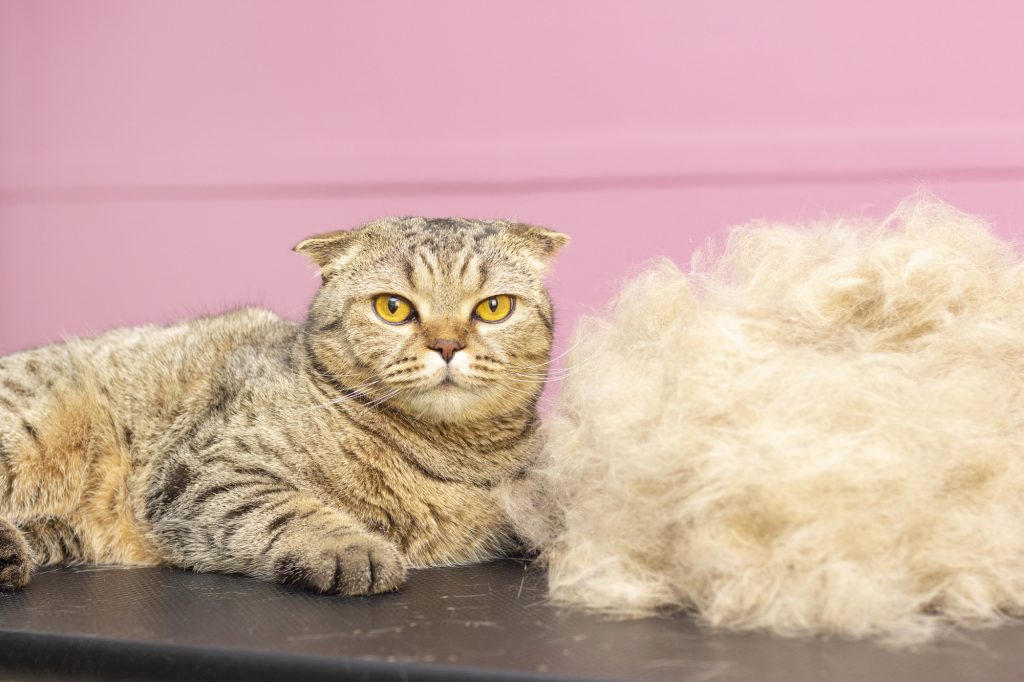
Frequently Asked Questions
1. Does shaving a cat ruin its fur?
Shaving a cat does not necessarily ruin its fur, but it can lead to irregular hair growth in some cases. Regular grooming is essential to maintain a cat’s coat, but shaving should be done carefully to avoid damaging the hair follicles. If a cat is shaved too often or with improper tools, like a dull razor blade, it may affect the texture and growth patterns of the fur.
2. Do cats get sad when you shave them?
Cats may not necessarily get sad when shaved, but they can experience stress or discomfort during the grooming session. It’s important for pet groomers to be gentle, especially around sensitive areas, to minimize any distress. Professional groomers are skilled at keeping the grooming schedule and experience as stress-free as possible, which can help keep your cat calm.
3. How do you hold a cat to shave it?
To safely trim your cat’s fur, you must hold them firmly but gently to minimize the risk of injury. Positioning is key; hold the sides of your cat securely and use your other hand to pull the skin taut. This can help prevent the clipper blade from catching and causing injury to your cat. Always be cautious around the tip of the tail and other delicate areas.
4. Do cats like it when you shave them?
While cats may not ‘like’ being shaved, some may benefit from being shaved, such as overweight cats that have trouble grooming themselves or those that need a belly shave for medical reasons. Electric clippers should be kept cool to avoid discomfort, and by using a clipper blade like the 10 blade, you can ensure the process is as quick and comfortable for your cat as possible.
Shaving Your Cat: The Final Purr-Spective
Shaving your cat can be a significant event in its life, requiring patience and understanding from the owner. It’s essential to ensure the cat remains calm throughout the process, as stress can lead to a negative experience for both the cat and you. Remember that a cat’s comfort is paramount; therefore, when you shave all sides, move gently and with care. Always prioritize the well-being of your feline friend, considering the impact of shaving on their behavior and interactions, such as using the litter box or how they maneuver their rear legs.

Hi, I’m Zoey, a devoted mom to two charming Siamese cats. My passion lies in assisting fellow pet owners in providing optimal care for their cats. On CatsEuphoria, I share practical tips and relatable stories, inviting you to join me in appreciating the authentic bond between humans and our beloved feline companions.


